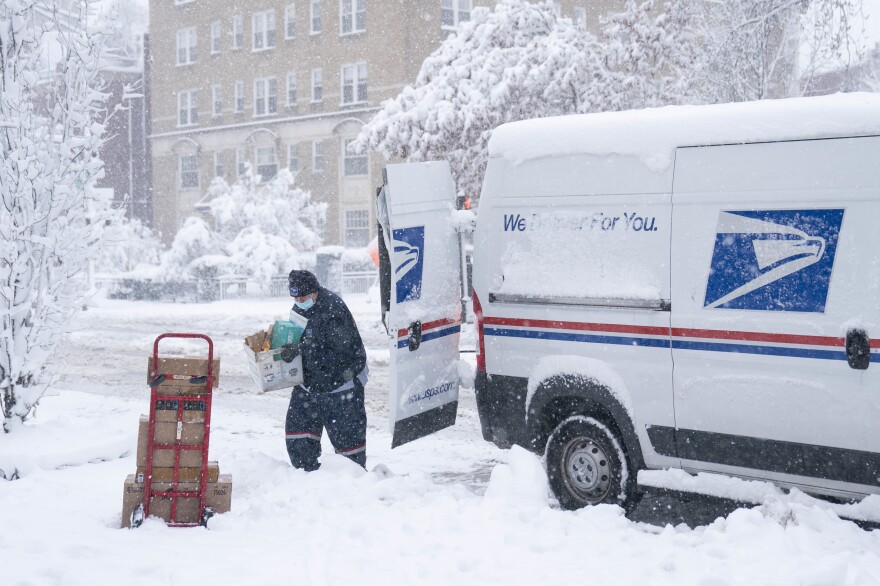More than half a trillion dollars. That's the estimated value of all the stuff that U.S. shoppers bought last year only to return it — more than the economy of Israel or Austria.
There's a direct link from returns to the eye-popping scale of U.S. shopping overall. In 2021, U.S. shoppers likely spent a record $4.4 trillion.
We tried new brands with unfamiliar sizes after seeing them on TikTok or Instagram. We overbought for the holidays, worried about the supply chain delays. And we shopped exceedingly online, where returns are between two and five times more likely than with purchases from stores.
Where does it all go? Take the blanket I bought on holiday sale, only to discover it's just too small for my new couch. So I sent it back. Sorry, blanket! What will happen to it?
"Your blanket has a very high probability of being in a landfill," says Hitendra Chaturvedi, a supply chain management professor of practice at Arizona State University, who estimates that 2021's returns topped $500 billion. "That is what consumers don't realize — the life of a return is a very, very sad path."
Of course, this grim assessment is a bit of a, well, blanket statement. A lot depends on the product and the store's policies. For example, pricier clothes are very likely to get dry-cleaned and sold again as new. Sealed, never-opened packages might get sanitized and put back on the shelf. Electronics often get resold in an open box.
Value is the big threshold: Is the product worth the cost of shipping back plus paying someone to inspect, assess damage, clean, repair or test? That's why stores abandon billions of dollars' worth of goods, refunding or replacing them without asking shoppers to send their unwanted items back.
Experts estimate that retailers throw away about a quarter of their returns. Returns and resale company Optoro estimates that every year, U.S. returns create almost 6 billion pounds of landfill waste.
Many others get resold to a growing web of middleman companies that help retailers offload returns. Some go to discount, outlet and thrift stores. Some go to sellers on eBay or other websites. Some get donated to charity or recycled.
These options have ballooned over the past decade, paving the way for more and more returns to find a new home, says Marcus Shen, chief operating officer of B-Stock, an auction platform where retailers can resell their returns, often to smaller stores.
"Anecdotally," Shen says, "what we've heard — particularly with larger retailers — is that a higher and higher percentage of [returned] stuff is going direct to consumer," with stores trying to resell more returns either themselves or through intermediaries.
Often, returns will change hands numerous times, and many end up sailing abroad. Chaturvedi suggested that as the likeliest fate of my too-small blanket: rolled into a bale with other returned clothes and linens, sold by weight to an overseas merchant that will try to sell or maybe donate it. If not, the items will be trashed or burned.
As companies compete on flexible return policies, technology is also slowly getting better at avoiding returns in the first place: helping shoppers buy the right-size sweater or picture a new rug inside their room.
Most importantly, Shen says, shoppers themselves are getting more and more comfortable with buying stuff that's not exactly brand-new.
"The idea of that is no longer creepy for us, right?" he says. On his holiday-returns agenda is an electric, self-heating coffee mug that he has never opened and feels confident will find a happy new buyer.
Copyright 2022 NPR. To see more, visit https://www.npr.org.




